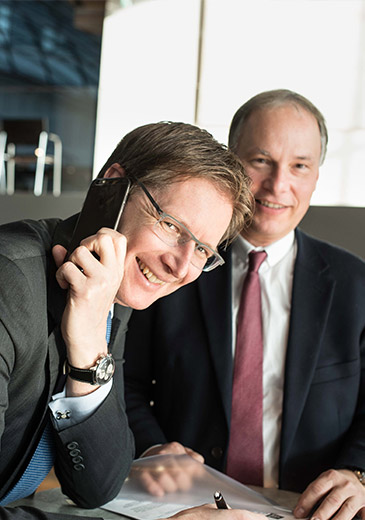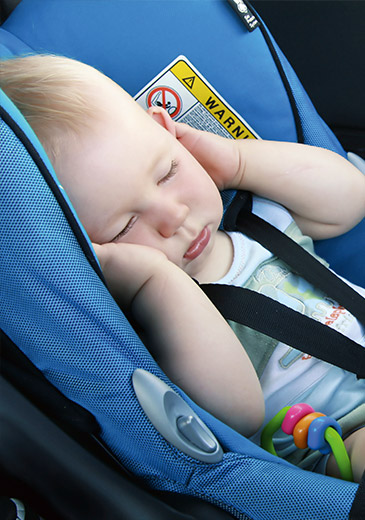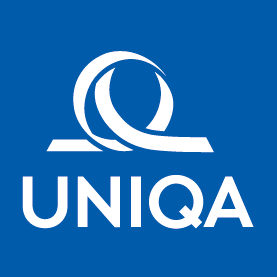Property and casualty insurance
Significant reduction in the combined ratio in property insurance
Andreas Kößl, the Management Board member responsible for property insurance in the Group, speaks in an interview about the package of measures that UNIQA wants to use to lower the combined ratio, how driverless cars will change the automobile business, and the differences between the markets in Austria and in CEE.
Which segments in the property insurance line make you happy, and which ones are difficult?
Currently automobile liability insurance and private household and homeowner’s insurance are going swimmingly in Austria; the classic property insurance business is developing very positively in the commercial sector. What is not so simple in Austria is the rest of the commercial business, industrial liability insurance, and comprehensive auto insurance. Comprehensive insurance is exposed to very strong price pressure.Revenues hover around zero in this line. But those lines in which we have some room to be creative also give us some pleasure. Of course we have to work to cover our costs and attain a certain profitability.
What isn’t working with the comprehensive auto business in Austria?
One example is replacement parts, which have become more expensive because cars are equipped with more and more technology. Before, a side-view mirror was made of metal and a mirror. Today, it can swivel and dip, has special non-mirroring glass and integrated indicator lights.
How does the business in Austria and CEE differ?
In Austria, the policy portfolio is much broader. Also, the insurance penetration is higher. One example is household insurance: 98 per cent of Austrians buy it, but only 50 per cent of people in CEE. Auto insurance products dominate the business in CEE. The profit situation in CEE often varies with the profit situation in Austria. In CEE, we have managed to make comprehensive auto insurance profitable, but auto liability insurance remains under high pressure.
Why is that?
The legal regulations, which are developing and change often – in some countries, such as Poland, changes are even retroactive. That means that we have to pay out higher benefits for old claims, yet we have premiums in our portfolio that were calculated at the levels that existed before the law was modified.

Andreas Kößl, 51
Andreas Kößl has been on the Management Board of UNIQA International since January 2014. He has also been a member of the Management Board of UNIQA Austria, responsible for property insurance since June 2016. He studied business and began his career in the Internal Audit department at UNIQA in 1995. He has held a series of senior posts in his many years with the Company, including as CEO of UNIQA Slovakia.
There are several developments in the auto industry that could influence the business, such as car sharing or driverless cars. What do you think of these developments?
I believe that the auto business is going to change massively due to technological developments and new mobility behaviour. This topic comes up with increasing frequency, especially in urban areas: “using instead of owning.” Many people don’t have a car anymore; they just rent one when they need one. We’re already seeing this trend in Vienna. Add to that technological developments that make cars increasingly independent. It’s a fact that most accidents are caused by a chain of human mistakes.
This could change with driverless vehicles. However, many questions still have to be answered; for example, who is liable for an accident? It could be the software or product manufacturer. What’s comforting is that we will of course continue to serve our existing auto insurance customers for a long time.
These developments may have positive effects in future on the combined ratio. In 2016, the combined ratio was at 98.1 per cent, and not at the average target value of 95 per cent. Why?
Our progress in increasing earnings performance was neutralised by counteracting factors: in Austria, there were unexpected losses from the processing of older claims from legal insurance. In CEE, especially in Poland and Romania, we were confronted with changes in the law that made the automobile line profits deviate significantly from the plan.
What measures are there to attain the target combined ratio in future?
We are working on a plan consisting of six measures (see the box). For example, we want to increase the accuracy of the risk calculation, but also improve fraud detection – not least for the benefit of all of our honest customers. We will also bring more innovative products to market. If we are successful with all of these measures, we will bring our combined ratio under 95 per cent by 2020, and for the long term.
Which innovations do you have in mind?
The trend is heading in the direction of pay-as-you-use. We are already well underway with SafeLine, our telematics tariff, and we are doing a product refresh in the middle of the year. Furthermore, we are planning to offer telematics products in CEE too – specifically in Warsaw, Prague, Budapest and Zagreb.
Lowering the combined ratio – the action plan
1. Portfolio management
Reducing expensive risks in favour of more profitable ones.
2. Pricing
Continue to offer sound premiums.
3. Claims management
Optimisation of regulation partner landscape in the field of international auto claims.
4. Product innovation
Roll out additional telematics tariffs for auto insurance and other successful products in the CEE markets.
5. Anti-fraud
Uncover and prevent insurance fraud.
6. Corporate business
Technical support for sales partners and underwriters to be able to better assess risks in large transactions.
Many of the activities in claims processing are supposed to be outsourced to the UNIQA Group Service Centre in Slovakia. How many Austrian jobs will this cost?
It’s true that we are relocating more activities in the coming years, including in claims processing, to Nitra in Slovakia. The switch to Nitra, however, is being done via natural fluctuation. Almost every position that falls away here – due to retirements, for example – will move to Nitra.
Can you promise shareholders that the combined ratio for 2017 will be lower than it was last year?
That’s the goal we’ve set, and we’re going to work hard to reach it. Our target is a maximum of 97.5 per cent. That would be an improvement in profit of €18 million.

Since 2008, UNIQA has been offering the telematics tariff SafeLine in motor vehicle insurance. This should help keep drivers safer. One third of all accidents happen because they are distracted by a mobile phone while driving. To counter this trend, UNIQA rewards car drivers who put their smartphones away.

